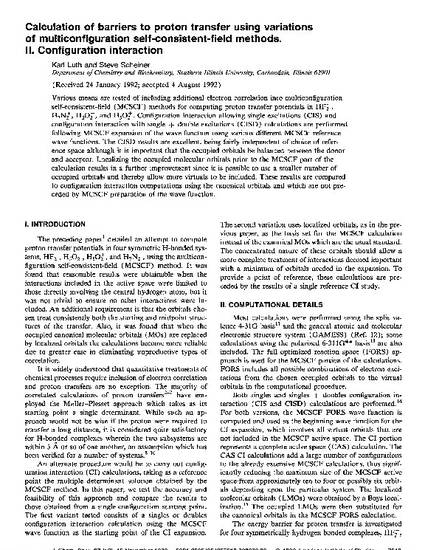
Various means are tested of including additional electron correlation into multiconfiguration self‐consistent‐field (MCSCF) methods for computing proton transfer potentials in HF2−, H7N2+, H3O2−, and H5O2+. Configuration interaction allowing single excitations (CIS) and configuration interaction with single + double excitations (CISD) calculations are performed following MCSCF expansion of the wave function using various different MCSCF reference wave functions. The CISD results are excellent, being fairly independent of choice of reference space although it is important that the occupied orbitals be balanced between the donor and acceptor. Localizing the occupied molecular orbitals prior to the MCSCF part of the calculation results in a further improvement since it is possible to use a smaller number of occupied orbitals and thereby allow more virtuals to be included. These results are compared to configuration interaction computations using the canonical orbitals and which are not preceded by MCSCF preparation of the wave function.

http://onlinelibrary.wiley.com/doi/10.1002/qua.560440872/abstract
Publisher PDF is available for download through the link above.
Published by Wiley-Blackwell in International Journal of Quantum Chemistry